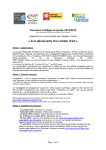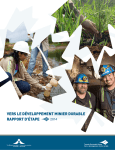Download April - Cessna Support
Transcript
APR 2009 Customer Spotlight: Syncrude Citations Rack Up Big Flight Hour Utilization Records Explaining How CPCalc Performs with Climb Performance Cessna Recommends Guard Pin Inspections for Rudder Cables Conferences, Updates and more > technical INFO >> new and improved 5 goodrich gives advice for stained wheel bearings 6 tighten loose set screws in rudder trim knobs 1 citation parts distribution initiates team approach for improved customer service 6 shorter screws comply with intent of service letters 4 vendor indicates horizontal stab actuators are serviced 7 explaining how cpcalc performs with climb performance 4 team x develops flight management training video 9 check your cessna citation for nesting birds 8 option available for galley switch panel 10 cessna recommends guard pin inspections for rudder cables 12 680 epic software cd disks updated 14 cessna to change nlg strut servicing task 15 p&wc increases inspection interval for spark igniters 10 resetting no tire spindown cas messages 11 top 10 for storm force winds 13 non-use kicks in xm radio sleep mode 14 how low can you go? 15 rolls-royce offer for non-corporate care operators >> in every ISSUE 2-3 customer spotlight 14 ask the expert Message: > Ci t at i o n Par t s D ist r ibuti on I ni ti a tes Tea m A p p ro ac h f or Impr ov ed Customer Servi ce Citation Parts Distribution (CPD) is introducing a new team-based approach to providing service and support to Citation customers around the world. Bill Collier, Vice President, Citation Parts Distribution, says the new program is designed to provide improved access and a more user-friendly environment for all Citation customer categories, including individual owners, fleet customers, company-owned Citation Service Centers(CSC) and independent Authorized Services Facilities(ASF). “Our objective is to make interaction with CPD an easy and satisfying experience for all Citation customers,” Collier said. “We want to provide the best service and support in the industry, and making it easy for customers to access information they need is a critical element in providing world class service.” Specialized Approach Based on proven Textron Six Sigma principles, Collier says the new program divides CPD’s customer service professionals into teams that will specialize in handling specific customer segments. A customer will contact his or her team to address all Citation parts and service related issues, including ProAdvantage program administration, parts ordering or warranty issues. Under the old system a customer contacting CPD would follow a series of phone prompts to reach the correct department to work specific issues. Program administration was fielded separately from parts ordering, and warranty was handled by yet another department. In the new system, Collier said, the customer will have a dedicated phone number leading directly to his or her team. The team member answering the phone will be able to field calls involving any CPD subject, so it will not be necessary for a customer to be shifted from one service representative to another. page 1 Closer Working Relationship The team will represent a single point of contact for the parts or ProAdvantage customer, so the customer and the team can develop a close working relationship for any support issues that arise. In most cases, Collier said, a customer will interface with the same team member every time. There will be separate teams assigned respectively to individual customers, fleet customers, Citation Service Centers, and the independent Authorized Service Facilities. With this approach, Collier said, teams can develop expertise involving specific issues unique to their specific customer segments. For example, he said, Cessna Service Centers don’t need a lot of support beyond getting the parts they need in a timely manner, while individual operators typically need more technical assistance in determining which part may actually be required for the maintenance task at hand. “The requirements of an ASF can be quite different from the needs of an individual operator,” Collier said. “This will allow us to maximize our resources in providing the best service to our customers.” Collier said the new system would be particularly advantageous for customers who maintain their aircraft using a combination of their own maintenance personnel for routine line maintenance and either a Citation Service Center or an ASF for heavy maintenance or phase inspections. Supplier Interactions Reinforce Improvements The new teaming approach will be the most obvious change to customers, Collier said, but it is only a small portion of the overall changes being integrated into CPDs operations as part of the new program. making similar changes in its interaction with suppliers, how it manages the operations aspect of Citation parts inventory and distribution, and how it ensures compliance with all of the export and import requirements necessary to support the Citation fleet around the world. April Kick-Off Collier said the new program is being launched in April, but that full implementation could take six months to a year. It will involve, he said, considerable cross-training of personnel so that all team members have a high degree of proficiency in all aspects of Citation support. “I expect we’ll be 90-percent efficient within two months,” he said, “but there are some aspects of the job that are experience-based and will take some time to assimilate.” The new program, Collier said, is the product of an extensive study and analysis of how Cessna can best integrate the requirements of its customers, its suppliers, and its operations into an effective global organization. “We’re continuously looking at how we can improve CPD and integrate with the rest of Cessna to make it more efficient and responsive to the customer,” he said. The new teaming approach will be the most obvious change to customers, Collier said, but it is only a small portion of the overall changes being integrated into CPDs operations as part of In addition to customer interface, CPD is the new program. spotlight Robin Borse Chief Pilot / Flight Department Manager (left) Terry Vacheresse Director of Maintenance (right) Syncrude Citations Rack Up Big Flight Hour Utilization Records While some business owners have scaled back flight operations due to worldwide economic conditions, Syncrude Canada Ltd., based in Fort McMurray, Alberta, Canada, is keeping its jets as busy as ever. “From Day One over 30 years ago, Syncrude has taken the view that corporate aircraft are a tool to be used for the company, so we’ve adopted a heavy corporate shuttle mission,” says Aviation Manager Robin Borse, who oversees two Citation Encores that fly between Fort McMurray, Edmonton and Calgary in Alberta. Cessna Aircraft Utilization Award Syncrude’s record of heavy flight utilization places it in rarified strata. One of its Citations logged an impressive 1,131.5 hours in the past year, which qualified the company to receive this year’s Cessna Aircraft Utilization Award. Just as surprisingly, its other Encore racked up nearly as much time – a whopping 1,130.9 hours. “We’re putting thousands of people page 2 through these airplanes in a year,” says Borse. “It’s more economical for us to do this than to put everybody on airlines.” Operating Citations for more than 20 years, Syncrude has won the Cessna Aircraft Utilization Award many times. Conventional wisdom might lead some aviation observers to believe that Syncrude must be flying vast distances to pile up the flight hours that it does. They’d be wrong. Each aircraft registers 1,700 to 1,800 cycles annually while flying multiple daily legs that generally are fairly short. Edmonton flight time is 35 minutes; Calgary’s is an hour. One of the longer flights is an occasional three-hour trip to Sacramento for scheduled maintenance at the Cessna Citation Service Center. With Syncrude’s main operation in Fort McMurray, a research department in Edmonton and a projects group in Calgary, the company relies heavily on Citation business jets to keep it running smoothly. Fort Mc- Murray is a community of more than 60,000 residents with an economy based on oil, natural gas, pipeline, forestry and tourism. Athabasca Oil Sand Deposits Syncrude, with about 5,000 employees, operates the largest crude oil production facility in the world. The crude oil is produced by upgrading a molasses-like substance called bitumen. The process involves: mining, extracting and upgrading the bitumen contained in the Athabasca Oil Sand Deposit in northeastern Alberta. The deposit is the world’s largest single oil deposit. Alberta’s three oil sand deposits have a production potential five times that of conventional oil reserves in Saudi Arabia. Syncrude’s final product is sent by pipeline to three Edmonton-area refineries and to pipeline terminals that then ship it to refineries in Canada and the United States. Syncrude’s oil sands production is a joint venture of Syncrude (the project operator), and the project’s owners which include: Canadian Oil Sands Limited, ConocoPhillips Oil Sand Partnership II, Imperial Oil Resources, Mocal Energy Limited, Murphy Oil Company Ltd., Nexen Oil Sands Partnership and Petro-Canada Oil and Gas. to Sacramento is for Phase Inspections. Basially we do a Phase 5 just to round out the calendar and put them back on track again. But all the other work is done in house,” he says. Two Citations, 10 Pilots, Two Mechanics The Syncrude flight department has 10 pilots and two Aircraft Maintenance Engineers to keep its nine-passenger Citation corporate shuttles in the air year around. Alberta’s weather can be challenging, with long, very cold winters and fairly warm but short summers. Syncrude has its own hangar at a 5,000-foot strip at Fort McMurray. Five Days a Week Reliability Borse, Syncrude’s aviation manager, has 13,000 flight hours over 30 years of flying, including 7,000 in Citations. The other nine pilots in the flight department log up to 700 flight hours annually in the Encores. Chief Engineer Terry Vacheresse has high praise for the Cessna Citation Service Center in Sacramento and for the Citations he’s charged with maintaining. “We have very little local support up here because we’re so far north,” he says. “We have no avionics shops here. We have no engine shops here. We have no parts distribution here. That makes us unique, but has proven the point that a Citation can run well in these kinds of conditions,” he adds. Vacheresse says Syncrude’s two aviation mechanics maintain the two Citations internally. “The only time we take them out page 3 They fly five days a week. If you do the math, that means each Encore is in the air four to five hours every business day. The Syncrude “airline” has about an 80 percent load factor, with seven of nine seats occupied on average by company senior leadership and regular line employees. “Our CEO will be rubbing shoulders with the line engineer, or whomever, on lots of flights,” Borse says. With its heavily utilized airplanes such a crucial factor in the company’s operation and success, dispatch reliability of its Citations is critical. After decades of flying Cessna business jets more hours than most other operators, Syncrude’s Citations give a true Encore performance. Vendor Indicates Horizontal Stab Actuators Are Serviced Cessna has been advised by the vendor of Horizontal Stab Actuators that its new and exchanged actuators are being properly serviced with oil. This provides relief for servicing when first installing the new or exchange horizontal stabilizer actuators. – YOUR CONTACT – 560xl, ata: 27-40 andy Payne Operators are reminded that the Phase 5 interval to inspect for horizontal stab actuator oilleaks and proper oil-servicing levels remains in Chapter 5 of the Model 560XL Maintenance Manual. Team Excel 316-517-4616 (Office) [email protected] >Team X Develops Flight Management Training Videos 750, ata: 34-60 Team X has developed a series of training videos for the Flight Management System (FMS). The videos demonstrate procedures for Aircraft Database Loading, Custom Database Loading, Dual Single Mode, FMS HYPER Start, and RMU Maintenance. To see the FMS training videos: 1. Login to the CessnaSupport.com website. 2. On the Member Access page, click on the Citation 750 link. 3. On the 750 Home Page, click on the Training Videos link, (see illustration provided). Additional videos covering other subjects will be added in the future. If you have comments or suggestions for training videos please call or e-mail Team X. Questions, please contact: Team X 1-888-622-4789 [email protected] page 4 Goodrich Gives Advice for Stained Wheel Bearings all models, ata: 32-40 Some operators have unnecessarily rejected wheel bearings because they believed stains on rollers indicate that the rollers were either heat damaged or corroded. Consequently, Goodrich Corp. has issued SL 2088 for Goodrich nose and main wheel assemblies installed on Cessna Citation aircraft. The service letter explains that grease or water can also stain wheel bearing rollers. Technicians can quickly check to see TM if the stains are actually heat damage or corrosion by using a 320 grit abrasive cloth or a Scotch-Brite surface conditioning pad on the rollers. The condition of the wheel bearing can be determined using the following tips: Grease and Water Stains Grease or water stains can usually be easily removed, and it is not necessary to remove all of the grease stains. Stains from grease do not decrease performance of the wheel bearing. However, if the surface of the rollers or bearing cup are etched or pitted, then the part should be discarded. Heat or Burn Stains Heat causes stains that cannot be easily removed. Goodrich advises technicians to look for these types of stains on the large end of the rollers. The same discoloration may also be evident on the outer diameter of the large rib of the wheel bearing. Score marks are another indicator that the wheel bearing has overheated. If any of these types of damage are identified, then the wheel bearing has reached the end of its service life. Questions, please contact: Aircraft Wheels & Brakes Goodrich Corporation 937-339-3811 937-440-2055 (FAX) page 5 www.cessnasupport.com 560xl, ata: 27-20 Citation Customer Service recommends that operators check the security of 6661049-9 Rudder Trim Knobs, says Andy Payne, Team Excel. If the trim knob can be removed by hand, the AN565A6H6 Set Screw will need to be tightened with a hex wrench. – YOUR CONTACT – Tighten Loose Set Screws in Rudder Trim Knobs andy payne Team Excel 316-517-4616 (Office) [email protected] Citation Service Center technicians have noted several instances where the set screws in the rudder trim knobs were not properly tightened, allowing the knobs to be easily pulled off. Function of the trim knob is not hampered by a loose set screw. The shaft and sleeve within the knob are keyed in a “D” shape. Shorter Screws Comply with Intent of Service Letters 525a, ata: 20-10 Cessna has approved the use of Aircraft affected by SL525A-28-02 shorter AN525-832 screws providing are CJ2 serial numbers 525A-0001 there are at least two threads show- thru -0244, and CJ2+ serial numbers ing through the nutplate for instal- 525A-0300 thru -0421. ceiling panels. Aircraft affected by SL525B-28-01 are CJ3 serial numbers 525B-0001 Team CJ has received field reports re- thru -0274. garding the length of baggage compartment panel screws installed Use of the shorter screws will re- with mandatory SL525A-28-02 and quire technicians to sign-off the SL525B-28-01 “Fuel Line Clearance compliance with the intent of the Improvement.” The AN525-832R8 or service letter being accomplished. AN525-832R9 screws called out in Refer to Chapter 20, Standard Prac- the service letters may not provide tices-Airframe in the applicable adequate clearance from the fuel Maintenance Manual for correct lines after installation. hardware installation procedures. page 6 – YOUR CONTACT – lation of the baggage compartment a. blake barnard Team CJ 316-517-3336 (Office) [email protected] >E xplaining H ow C P C alc Pe r fo rm s W ith C lim b Pe r fo rm an c e all models, ata: 10-20 525, 525a, 525b, 550, 560, 560xl, 680, 750, ata: 99-00 The Citation Performance Calculator, otherwise known as CPCalc, is one of three programs included in the CESNAV flight planning package currently available for 15 models plus Gross Weight Increase variants for the 560XL and 750. CPCalc is utilized to calculate takeoff, landing and climb performance. The other two programs are the Electronic Operating Manual (EOM) and the Citation Loading Calculator (CLCalc). Several customers have inquired about how CPCalc works with respect to climb performance. Climb Options On the ATIS/Obst. Page, CPCalc gives the user the option to enter either an obstacle to avoid or a minimum climb gradient to maintain. One or the other, or none, will be accepted. If “Clear Obstacle” is selected, the user will need to enter the obstacle’s height above the runway up to 4,000 ft and its distance from Reference Zero in ft or nm. Many pilots ask how they know the distance from Reference Zero since they haven’t calculated the takeoff distance to 35 ft yet. One way is to use the distance from the end of the runway to the obstacle and all unused runway adds to the safety margin. If “Maintain Climb Gradient” is selected, the user will enter the gradient in FPNM or percent and the level off altitude (up to 20,000 ft MSL). If neither is selected, standard certification gradient requirements will be assumed. On the A/C Config Page, you can also apply a 15° banked climb reduction to the 2nd and Enroute Segments. In CPCalc, the effective weight of the aircraft is increased by roughly 3.5 percent. When you calculate the data, the first page to appear is the Field Perf. Page if the aircraft can safely make the takeoff and climb. If it can’t, the program will give one of three messages: Departure Climb Limited, Runway Distance Limited, or Takeoff Impossible. For the first two, the max weight to meet the requested condition is page 7 suggested. If all requirements are met for requested conditions, the program will display the field length and V-speeds. Climb Analysis The next page (Climb Perf.) provides climb profile data. For calculations run without obstacle or climb gradient restrictions, the program assumes a climb single-engine to a net 1,500 ft AGL and then a level off. When obstacle clearance is requested, the program will maintain 2nd segment configuration until the net takeoff flight path clears the higher of 1,500 ft AGL or the obstacle by at least 35 feet. The same is true for a requested minimum climb gradient; 2nd segment will be extended until the Level Off Altitude is reached. For the operator, this means holding V2 with takeoff flaps until the obstacle is cleared or the Level Off Altitude is reached. Behind the scenes, CPCalc is checking hundreds of points along the flight path to ensure the aircraft is continually above the gradient surface. If it breaches the surface, the Departure Climb Limited message will appear as discussed earlier. It is important to understand the pilot is expected to delay Enroute segment transition until the obstacle is cleared or the Level Off Altitude is reached in order for the performance calculated to be applicable. When you look at the data presented on the Climb Perf. page, you may notice the 2nd segment net gradient listed is different than the minimum gradient you specified. This gradient is the instantaneous value at a specific point defined by certification standards. To obtain an approximation of average climb gradient up to the Level Off Altitude, divide the Takeoff Climb Increment by the 2nd segment flight path distance and then subtract 0.8% to convert the value to a net gradient. This should be equal to or greater than the minimum gradient you specified. This approximation, however, only holds true for temperatures near standard. It is accepted that at higher altitudes the aircraft may be climbing at a gradient less than the minimum, however the gradient at lower altitudes is higher than required, so overall it is balanced out. The extra altitude increment down low offsets the reduced performance higher up. Rather than just checking instantaneous gradients up to level-off, CPCalc is checking altitude, making sure the aircraft is always above the climb gradient surface for the corresponding distance. This allows for maximum weight at the given condition. The diagram below should help illustrate this. Beyond the Flight Manual In some respects, CPCalc goes beyond the planning capability of the AFM since CPCalc calculates an extended 2nd segment to clear an obstacle or to maintain a minimum climb gradient. Because of their advanced methods and accuracy, all CPCalc programs are FAA approved, right out of the box. The AFM supplement referenced on the MAIN page contains this approval as well as explanations for the various climb situations. Questions, please ask for Citation Pilot Services at 316-517-7717. option available for galley switch panel 560, ata: 25-30 Citation Encore+ operators have an option available to modify Galley Switch Panels, which control power to the interior cabin lights, entry light, galley work light, and the hot liquid container. The manufacturer of the hot liquid container assures Cessna that power to containers will be interrupted if the units become too hot. However, if this condition occurs frequently, the service-life of thermostats can be compromised. Citation Parts Distribution (CPD) can arrange a modification to the switch panel that changes the existing P/N 101016-68 to the -145 configuration. The option is also available to customers with the Slimline Refreshment Center installed. The existing P/N 101016-71 Switch Panel can be modified to the -146 part number. Some operators have expressed concerns about applying power to empty hot liquid containers and the resulting possible damage. This could potentially happen if the container is emptied after landing and the green power light goes unnoticed during the aircraft’s follow-on mission. – YOUR CONTACT – The modified panels default all lights and hot liquid container power settings to OFF. This changes the existing switch panel function, which revert all lights and hot liquid container power settings to their previous mission switch positions when the shipside electrical power is initially energized. Arrangements for the galley switch panel/switch panel modification can be made at a reasonable cost. The downtime can usually be completed within one to two weeks. It is recommended to schedule the airplane downtime during an extended inspection period or maintenance event. Operators can expect to see the new alternate switch panels in an upcoming revision to the Model 560 Illustrated Parts Catalog. Tim Morgan Team 550/560 316-517-2680 (Office) [email protected] page 8 Check Your Cessna Citation for Nesting Birds all models, ata: 99-00 Lately, in-flight encounters with birds have received considerable press attention. Additionally, being attentive for bird activity during pre-flight and post-flight walk-around procedures can prevent costly damage to your airplane. Even during short turnarounds, birds can nest inside your aircraft. Before Flight • Check any air inlet, exhaust, cavity, or hole that might be conducive for bird shelter • Make sure engine inlet fans have free movement • Look in the wheel wells After Flight • Install inlet and exhaust engine covers Remove Bird Attractions • Remove food sources such as bird feeders from airport environments • Remove birdbaths and avoid standing water on tarmacs • Remove nesting materials whenever possible • Remove plants, shrubs, and trees conducive to bird attraction CJ C7428C0C8>=<060I8=4 has arrived By now you should have received the premier issue if you own or fly a Citation jet. That’s because CJ is sent out to the entire audience of Citation jet owners and operators — worldwide. Stunning photography, complete editorial coverage of CJ ownership and operations — and an array of advertisers serving the CJ market — that’s what you’ll find in the next issue too, and in each issue thereafter. C74>A868=0;28C0C8>=94CE0 CJ CJ ;D4?;DB?A>6A0<CDA=B1;4 0:C>278224BB=0º=>F>AA 84B»?A>6A0< 0_aX[<Ph! ( C7428C0C8>=94C>F=4AB<060I8=4 C7428C0C8>=94C?8;>CB>F=4A ?8;>C0BB>280C8>=<0A:4CB 9P]dPah!'kE^[d\T k=d\QTa CWT2XcPcX^]9Tc<PVPiX]Tk "($ DB3 8]ca^SdRc^ah 8BBD4 <0ACB8=BDA0=248=B867CB $50C0;5;0FB 5TQadPah<PaRW!( E>; => C7428C0C8>=94C>F=4AB<060I8=4 vs 525 CitationBest 500 Series CJ Yet: buy? on CJ4 is the better Which The Citati Mobile Service Units – YOUR CONTACT – — it’s all about you. page 9 Bryan Whitehill Pilot Services 316-517-2658 (Office) [email protected] Questions? Call John Shoemaker 800-773-7798 Cessna Recommends Guard Pin Inspections for Rudder Cables Citation Customer Service encourages main650, ata: 27-20 tenance technicians to inspect guard pins on the rudder cables to ensure that both are installed and secure, when access is available. In the past decade, Cessna Customer Service has received four reports of the 6260102-1 Rudder Loop Cable coming off the MS20220-4 Loop Pulley forward of the instrument panel. In all four events, it was determined that one or both of the NAS427K11 Guard Pins were missing. The upward movement of the rudder pedal lever arms will raise the loop cable slightly out of the loop pulley groove on top. If one or both of the guard pins are missing, it is possible for the cable to come completely out of the loop pulley, creating a cascade of the rudder pedal arms dropping, and subsequently releasing aft rudder cable tension. – YOUR CONTACT – 650, ata: 27-20 Bon Purganan The rudder loop cable is normally under tension. However, when both rudder pedals are pressed in such a manner as the flight crew setting the parking brake, there is an upward deflection on both rudder pedal lever arms. Team Legacy 316-517-1047 (Office) [email protected] Resetting NO TIRE SPINDOWN CAS Messages 510, ata: 31-50 Team Mustang is responding After the procedure is complete, Another known cause for the mes- to customer inquires about the re- perform one gear cycle, and the CAS sage to appear is removal of bat- setting of white advisory NO TIRE message should reset. When the tery power before the ANTISKID SPINDOWN Crew Alerting System NO TIRE SPINDOWN CAS message is switch is placed in the OFF position. (CAS) messages. posted, the anti-skid system will be The Antiskid System Controller will inoperative. If the CAS message does sense low voltage and flag a fault. NO TIRE SPINDOWN Reset not reset, further troubleshooting When the DC POWER BATT switch is Procedure procedures will be required. then placed in the ON position, the NO TIRE SPINDOWN message is illu- “To reset the NO TIRE SPINDOWN message, the antiskid system will What Causes the Message? need to sense a normal landing gear If the brakes are inadvertently cycle,” says Erik Rollefson, Team tapped before gear retraction, NO Cessna is currently working with Mustang. This can be accomplished TIRE SPINDOWN messages can ap- the vendor of the antiskid control- in the hangar on jacks, or after take- pear. The Antiskid System Control- off with a normal gear retraction. ler will need to sense that the main If the CAS message appears before landing gear tire rotations spin ler to correct the erroneous TeamNolan CJ low voltage fault. 316-517-8853 (Office) flight, the pilot(s) can refer to the down normally after takeoff, oth- Emergency/Abnormal procedures erwise a fault is noted causing NO in the Model 510 Pilot’s Abbreviated TIRE SPINDOWN messages to ap- Checklist. pear. the procedure is complete, complete one gear cycle, and the – YOUR CONTACT – 10 pageAfter minated. Barnes [email protected] erik rollefson Team Mustang 316-517-7056 (Office) [email protected] y ) > To p 10 f o r Sata: t o10-20 r m Fo r ce W i n ds all models, all models, ata: 10-20 Spring weather is returning to many areas. If you plan to keep your airplane stored outside, there are certain precautions to consider. Strong to severe thunderstorms are capable of producing powerful damaging winds. Airplanes not ready for extreme weather conditions can be susceptible to damage, resulting in expensive downtime and repairs. To prevent this costly scenario, Customer Service offers these Top 10 precautionary steps. 1. Park the aircraft on a level surface with the nose facing into the wind. 2. Prevent the airplane from tipping on its tail by keeping the proper amount of fuel in the aircraft. In most Citations, fuel in the wing and center fuel tanks can keep the airplane’s center-of-gravity where it needs to be on the ramp. This is true in most Citations. However, for 525-series aircraft it is opposite. Adding fuel to empty wing tanks will move the center-of-gravity aft. 3. Place a tail stand under the empennage. This procedure is not listed as a recommended step in Chapter 10 of the Maintenance Manual for extended outdoor storage. However, it is an added measure of prevention for severe wind conditions. Refer to Chapter 7 in the applicable Maintenance Manual for proper tail stand placement. 4. Prevent aircraft movements by chocking the main landing gear tires. Additional chocking of the nose landing gear tire(s) is even better. Consider adding ropes to the landing gear to secure the aircraft to the parking apron. Mooring procedures should be used anytime adverse winds or severe weather is expected. Refer to Chapter 10, in the applicable Maintenance Manual. 11 page 5. Set the parking brake as an added measure to prevent unwanted aircraft movement. 6. Sand bags can be used to add weight in the nose. This is especially useful if the aircraft is light-weight from removal of interior components or fuel. 7. Set the control lock (if installed) to prevent the flight controls from banging into their stops. Gust loads from storm winds commonly exert forces many times greater than normal flight loads on flight controls and related systems. 8. Connect a static ground cable. This will prevent static electrical buildup on the aircraft from wind and rain. 9. Install protective covers on the pitot probes to restrict airflow and foreign objects from entering the probes. Refer to Chapter 10 in the applicable Maintenance Manual. 10. Install inlet and exhaust engine covers. This action will prevent foreign objects from entering the engines. It is equally important to make sure the engine cover straps are correctly installed. A loose engine cover strap can cause extensive paint damage from wind driven movements causing buckles/clips to strike against engine nacelles. Refer to Chapter 10 in the applicable Maintenance Manual. Questions, please contact: Customer Service Hot Line 1-800-835-4090 316-517-6261 (International) [email protected] 680 Epic Software CD Disks Updated 680 , ata: 34-00 Since August 2005, when Cessna first released this article, the company has updated 680 Epic Software CD disks with new software and part numbers. The Citation Sovereign is delivered with three software CD disks that contain software tools and airplane operating software. 525, 525a, 560xl, 680, 750, ata: 23-0 Disk #1: Labeled “Epic Tools for Cessna Citation Sovereign” Media P/N: TM7035295-007 • This disk contains current laptop programs for Epic Phase IV, 4.1 & 4.2 software. This disk will auto-run and install necessary programs for the Model 680. If you are not sure your laptop has it installed, just re-run the disk. Doing this on a laptop that has been previously loaded will not harm the settings and it will still operate correctly. Always accept the default settings when prompted. If a new laptop is used, call Team Sovereign at 316-517-1695 for assistance with setting up the network configuration settings that must be made first. This is a disk for the laptop computer only and does not load to the aircraft. Disk #2: Labeled “OP SW-Cessna Citation Sovereign” Media P/N: MM7031847-007 Phase 4, MM7031847-008 Phase 4.1, MM7031847-009 Phase 4.2 • This disk contains Epic Operation software for the airplane. This disk is installed on the airplane ONLY and does not contain any laptop programs. This disk should be kept with the airplane at all times. Under certain circumstances, this disk is necessary to program a new Epic module if replaced for maintenance. Disk #3: Labeled “Cessna Citation Sovereign Options Data” Media P/N MM7037749-xxx Phase 4, DM7038645-xxx Phase 4.1, DM7038645-xxx Phase 4.2 TACT – 12 page troy terry Team Sovereign 316-517-2591 (Office) [email protected] – YOUR CONTACT – – YOUR CONTACT – • This disk contains data that enables and configures various options on the aircraft. The dash number varies by aircraft. This disk should be kept with the “OP SW-Cessna Citation Sovereign” disk on the airplane at all times. Under certain circumstances, this disk is necessary for maintenance. nick miller Team Sovereign 316-517-2016 (Office) [email protected] Non-Use Kicks In XM Radio Message: Sleep Mode 525, 525a, 560xl, 680, 750, ata: 23-0 Cessna Customer Service reminds Citation operators with optional XM radios to use the radios monthly to prevent the system from going into sleep mode. In fact, it is necessary to use each XM channel at least once a month and if the XM radio is a four-channel installation, each channel or seat location must be utilized monthly. Citation operators have experienced their XM radios becoming inoperative after a period of nonuse. This has resulted in unnecessary troubleshooting efforts and components being replaced when actually the receivers are in sleep mode. This function occurs when the XM radios are inactive for approximately 30 days. The sleep mode can only be reset with the use of a XM Radio Control Head, P/N XMC100-01, which is not the switch panel currently installed in Citations. The XM radio control head, in combination with a test harness, can provide the up/down command to reset the receiver. The test harness can be manufactured and the details are available from Team Sovereign. Both the control head and test harness can be purchased through Cessna. Questions, please contact: Team CJ 1-800-835-4090 [email protected] Team Excel 1-800-835-4090 [email protected] Team Sovereign 1-877-683-7344 [email protected] “... it is necessary to use each XM channel at least once a Team X month and if the XM radio is a four-channel installation, 1-888-622-4789 [email protected] 13 page each channel or seat location must be utilized monthly.” 510, ata: 12-00 Ever wondered what about minimum tire pressures? Well, so have other customers. Team Mustang has received customer inquiries about minimum tire pressures that require an operating nose or main landing gear tire replacement. Tire Pressure Resources “The best resource for this information is from the tire manufacturers,” says Walt Glosson, Team Mustang. The Citation Mustang uses either Dunlop or Michelin tires. The Dunlop General Practices Manual, pages 2728, is a good reference for operators with Dunlop tires. The Michelin Aircraft Tire Care and Service Manual, pages 44-45, can be referred to by operators with Michelin tires. – YOUR CONTACT – How Low Can You Go? walter glosson Team Mustang 316-517-3212 (Office) In addition, operating tire pressures for nose and main landing gear tires can be found in the Landing Gear and Tire Limitations, Section II – Operating Limitations of the Model 510 Airplane Flight Manual, and in Chapter 12, Tires – Servicing of the Model 510 Maintenance Manual. [email protected] Cessna to Change NLG Strut Servicing Task 750, ata: 12-10 Cessna Engineering recently called for changes to the Nose Landing Gear (NLG) Strut Servicing task. Pressure values for servicing nitrogen to the upper and lower struts of the NLG have been increased. Citation Customer Service has provided Task 12-10-38-781. This document should be referenced to properly service the NLG struts until a future revision of the Cessna Model 750 Maintenance Manual is released. Questions, please contact: Team CJ 316-517-3336 (Office) [email protected] Team X 1-888-622-4789 TACT – [email protected] 14 page P&WC Increases Inspection Interval for Spark Igniters 550, 560, 560xl, ata: 25-30 Pratt & Whitney Canada (P&WC) issued Temporary Revisions to Chapter 05-20-00 for all PW500 Series Engine Maintenance Manuals. The inspection interval for spark igniters in Table 1 Periodic Inspection has been increased from 300 + 50 hours to 600 + 50 hours. Following SB Compliance This affects all Citation Bravo, Encore, and Excel operators that comply with P&WC Service Bulletin No. SBPW500-72-30340, entitled “Replacement of Igniters and Ignition Cables.” The P&WC service bulletin introduced a new igniter cable and igniter with an improved configuration that reduces arcing at the connection. In addition, the igniter tip was redesigned for better durability. Questions, please contact: P&WC Customer First Centre (USA & Canada) 1-800-268-8000 (International Access Code) + 8000-268-8000 (Globally) 1-450-647-2888 [email protected] >Rolls-Royce Offer for Non-Corporate Care Operators 750, ata: 37-00 Rolls-Royce is offering recommended Service Bulletin AE 3007C-73-046 “New FADEC Diode Adapter” to operators who are not on Corporate Care, free of charge until May 1, 2009. The offer will be continued at 50% off list price from May 2 until November 1, 2009. From that date afterwards, the service bulletin will only be offered at list price. Note: Corporate Care operators will receive the bulletin free of charge regardless of the calendar date. The Rolls-Royce service bulletin affects aircraft 750-0001 thru -0166 with Full Authority Digital Electronic Control (FADEC) hardware listed in Rolls-Royce service bulletin AE 3007C-73-046, which is transmitted by Cessna Service Letter 750-76-03. Compliance with the bulletin introduces a new diode adapter that connects between the aircraft wire harness and the FADEC. The diode prevents uncommanded reverse voltage to the Fuel Pump/Metering Unit (FPMU) start coil. – YOUR CONTACT – The uncommanded reverse voltage can be caused by a short from the Permanent Magnetic Alternator (PMA) or an internal FADEC power supply failure. Reverse voltage has been a known cause for in-flight shutdowns. 15 page tim ryan Team X 316-517-8567 (Office) [email protected] >ask THE EXPERT answers> experts from the cessna support team share advice and shed light. Why are there two logic boards on the 560 XLS tail de-ice system? Answer On the XLS there are two PCB’s associated with the Tail De-Ice system designated as PCB’s NZ031 and NZ033. One board is the Tail De-Ice Control and the other is the Tail De-Ice Monitor. They do not control each side separately but one board controls the boot operation and the other monitors for proper operation of the valves and pressure sensors. Our company operates a CJ 525, CJ2 525A, and two CJ3 525B. We are interested in obtaining an Electronic Flight Bag (EFB). Can you recommend a company to supply EFBs? In our CJ3 we have installed IFIS and I think that could be a solution or way to achieve EFB on board. Answer Cessna uses Dennis Strumberger at Absolute Computing Solutions (ACS). Cessna’s own flight department uses over 30 EFB’s purchased from ACS, loaded with OnBoard Data Systems’ browser. How To: submit comments and ask the experts The Direct Approach is published monthly by the Cessna Citation Service Organization. ask the experts at: [email protected] Our experts will do their best to provide answers to your questions. Even if your question is not posted in the publication, you will receive an emailed answer. page 14 ACS offers a variety of EFB platforms. We us Fujitisu T2020’s, which is a fullsized tablet with a swivel-top. ACS packages many features to make it a very capable EFB. If you prefer a smaller EFB, you might consider the P1620. Dennis Strumberger, or the ACS website www.GoToACS.com, can provide more information. Regarding the OBDS Browser and other software: Cessna offers a Flight Planning software package called CESNAV that includes the Citation Performance Calculator for takeoff and landing, Electronic Operating Manual for enroute planning, and Citation Loading Calculator for Weight and Balance. More information is available from the Cessna Pilot Services group, 316-517-7717, or from https:// support.cessna.com/custsupt/contacts/contactload.jsp?pg=217 www. flightsafty.com contact us at: 1-800-491-9796 or 316-220-3520 2nd Quarter - 2009 Maintenance Training Citation X (750) Adv. T/S May 11 - 15 Citation X (750) OMP May 4 - 8 Citation Sovereign (680) Update May 4 - 8 Citation III/VI/VII (650) OMP May 4 - 8 Citation Excel (560XL/XLS) Initial May 11 - 22 Citation Excel (50XL/XLS) OMP May 4 - 8 Citation V/Ultra/Encore (560) Initial June 1 - 12 Citation Mustang (510) Initial May 11 - 21 CitationJet/CJ1/CJ2 (525/525A) Update May 4 - 8 CitationJet 3 (525B) Update May 11 - 22 CitationJet 3 (525B) B2 April 30 - May 8 Avionics for AMTs May 18 - 22 Caravan I (208) [Note: 2 week course] May 11 - 22 Caravan I (208) Update June 1 - 5 worlds leading aviation training company notice calendar> >events CALENDAR here’s everything you should be in the know about! eaa - oshkosh, WI July 27-August 2, 2009 nbaa 62nd annual meeting & convention - orlando, fl October 20-22, 2009 Take Note! be sure to get these into your calendar. THANKS for taking time to read our publication! We appreciate your readership and will do our best to continue to present you with the latest Citation related news, products & happenings throughout the year. 15 page www.cessnasupport.com




















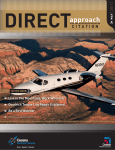
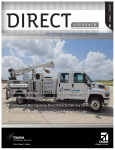
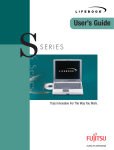
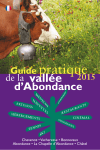
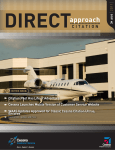
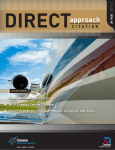
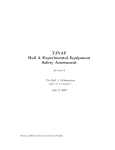
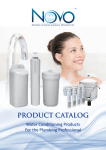

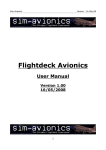
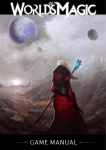
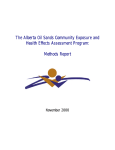
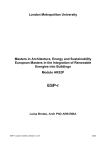
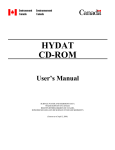
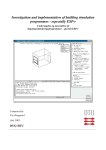
![[Télécharger version texte] - - 3,79 Mo](http://vs1.manualzilla.com/store/data/006407243_1-79397a2217be0b67364a874ab0beb3f2-150x150.png)


